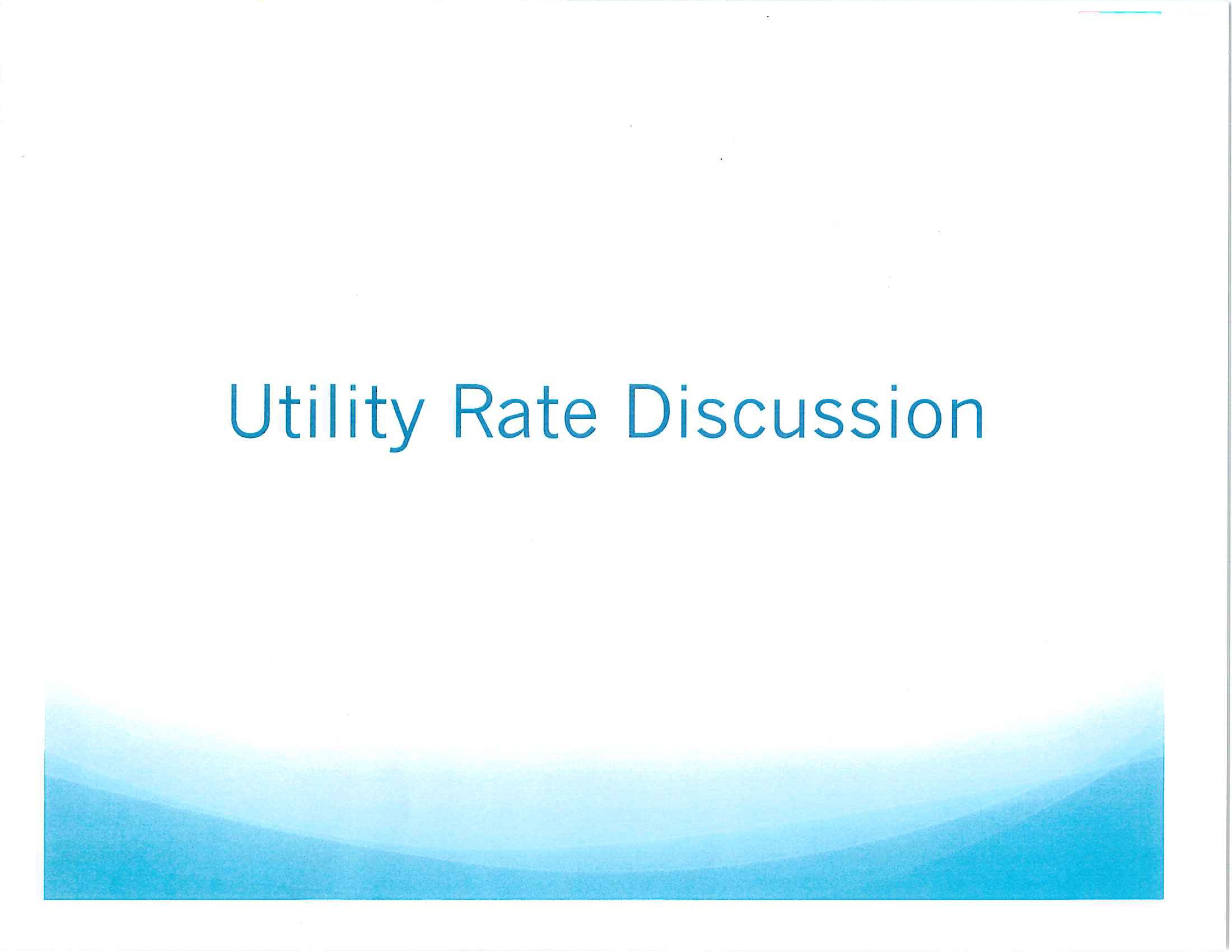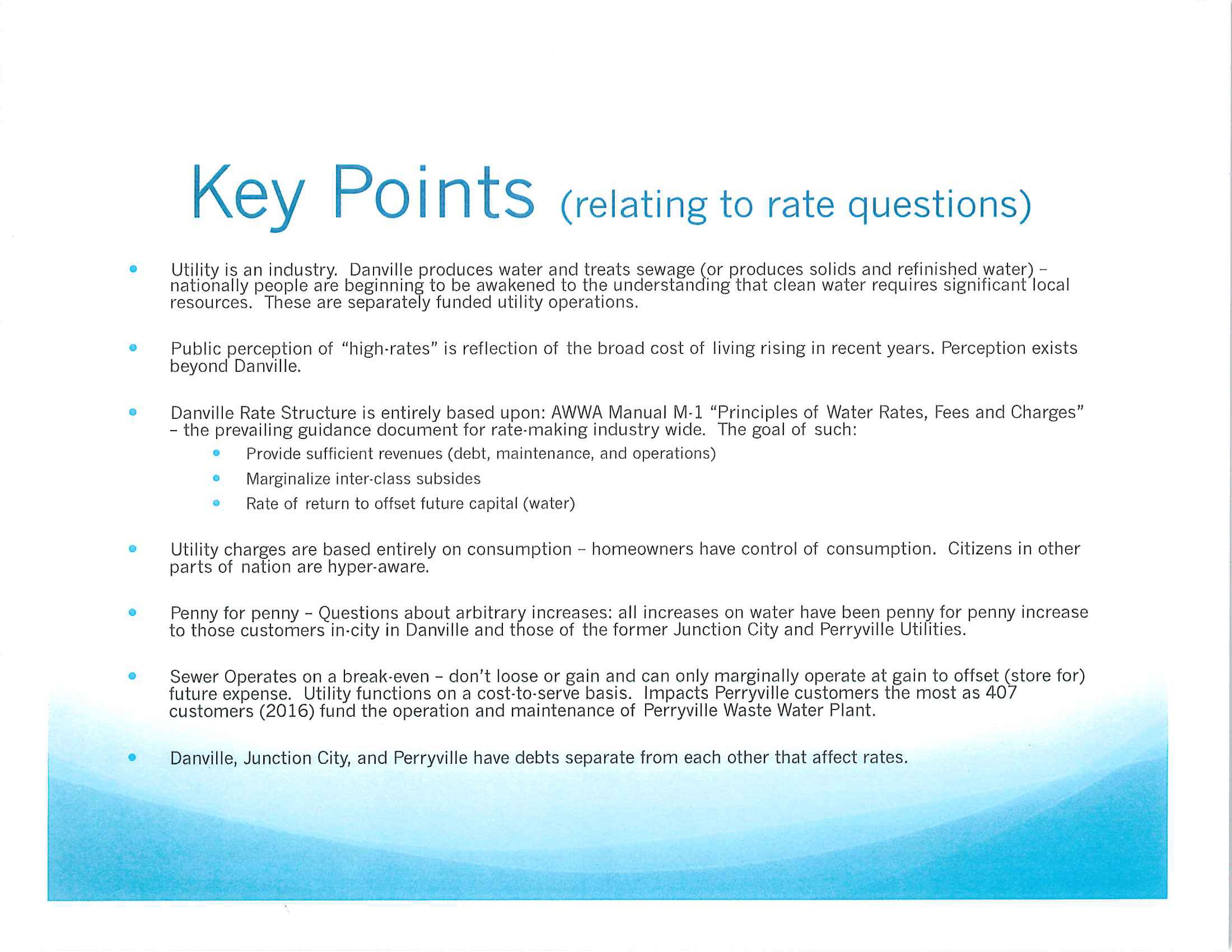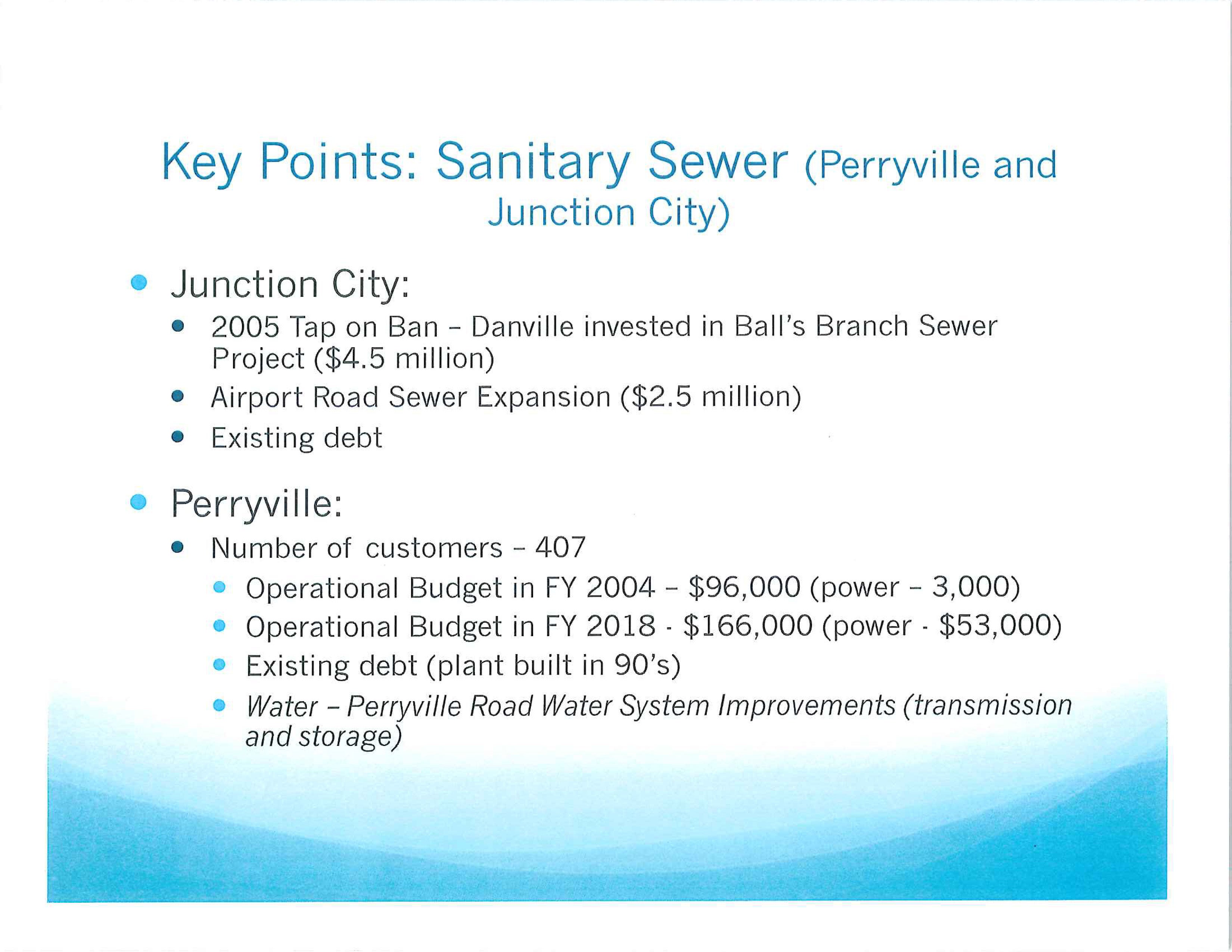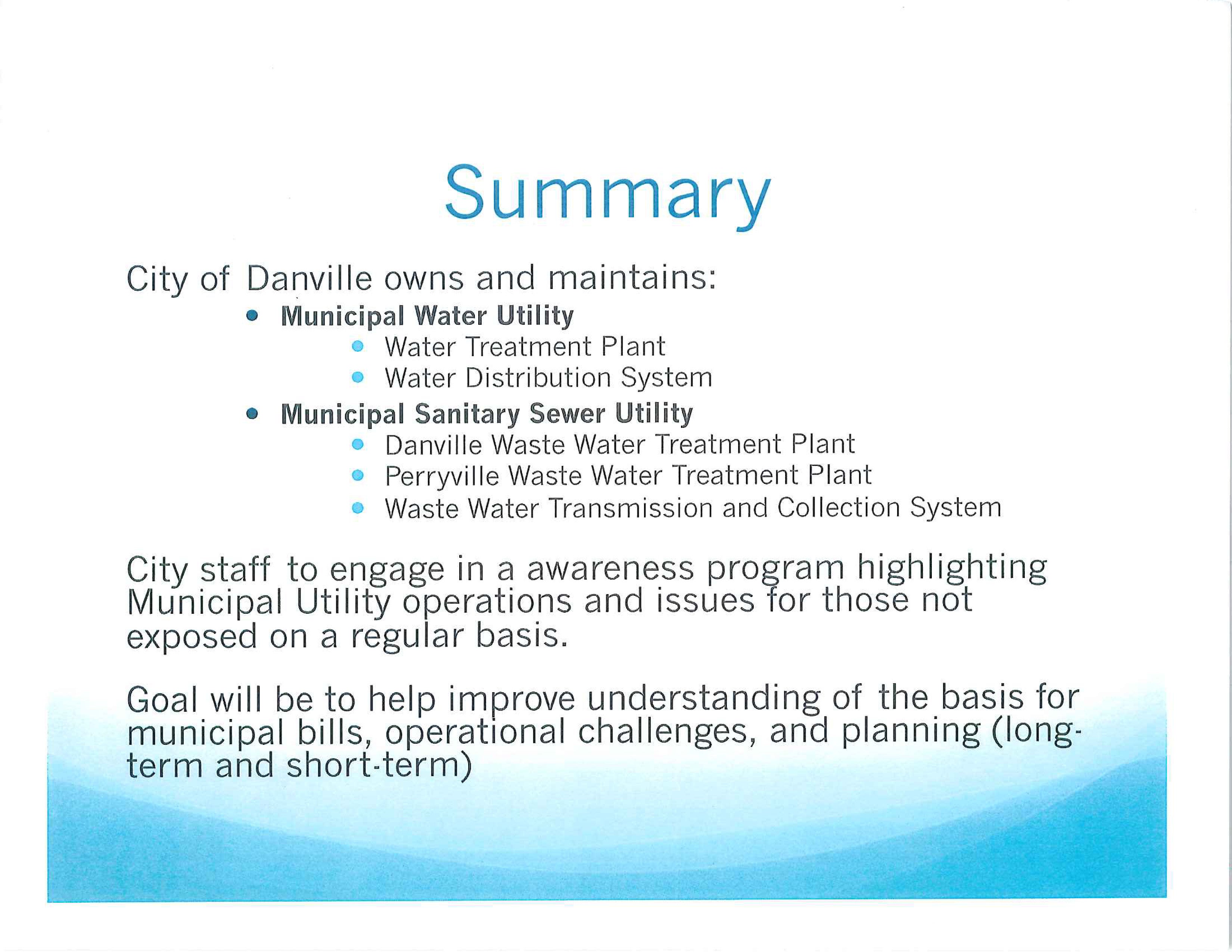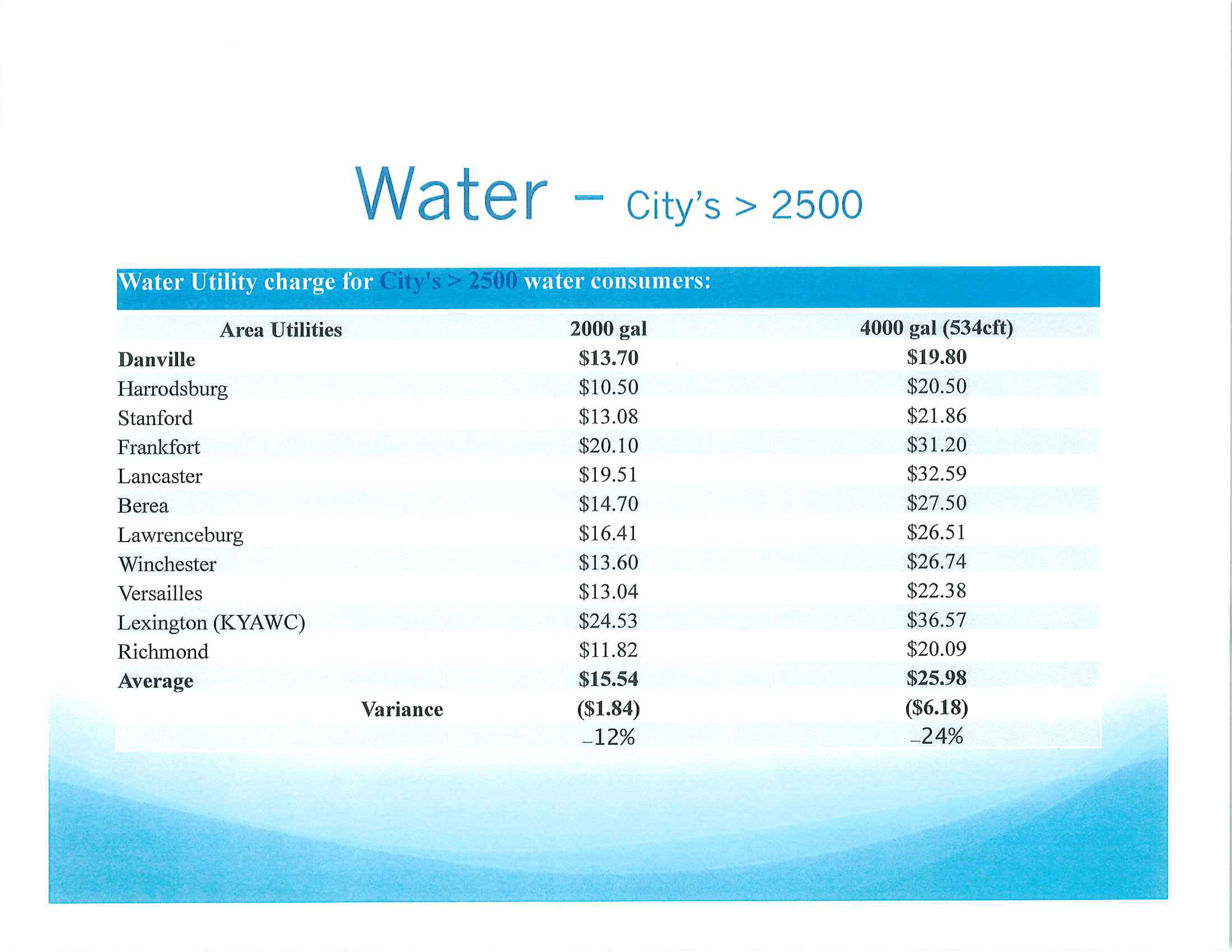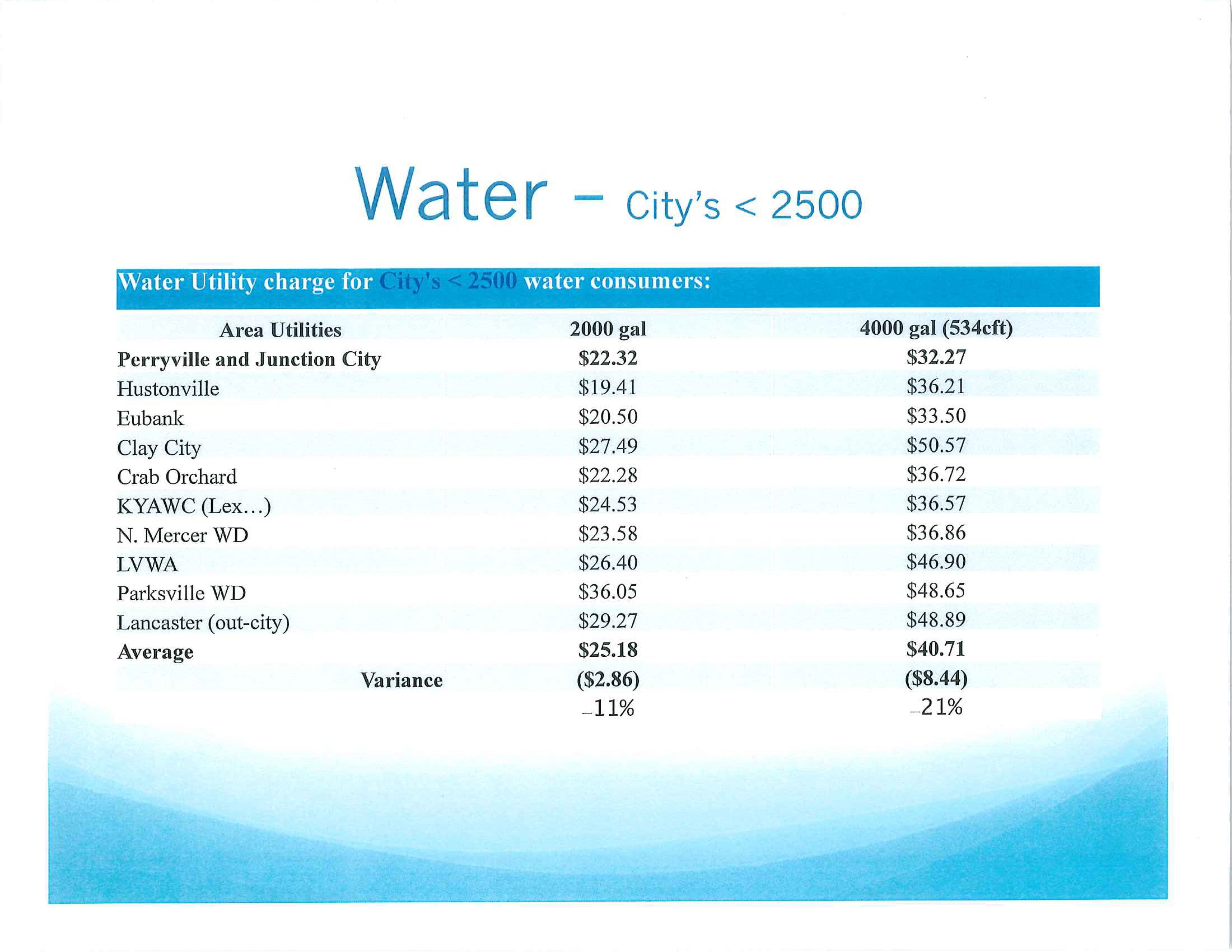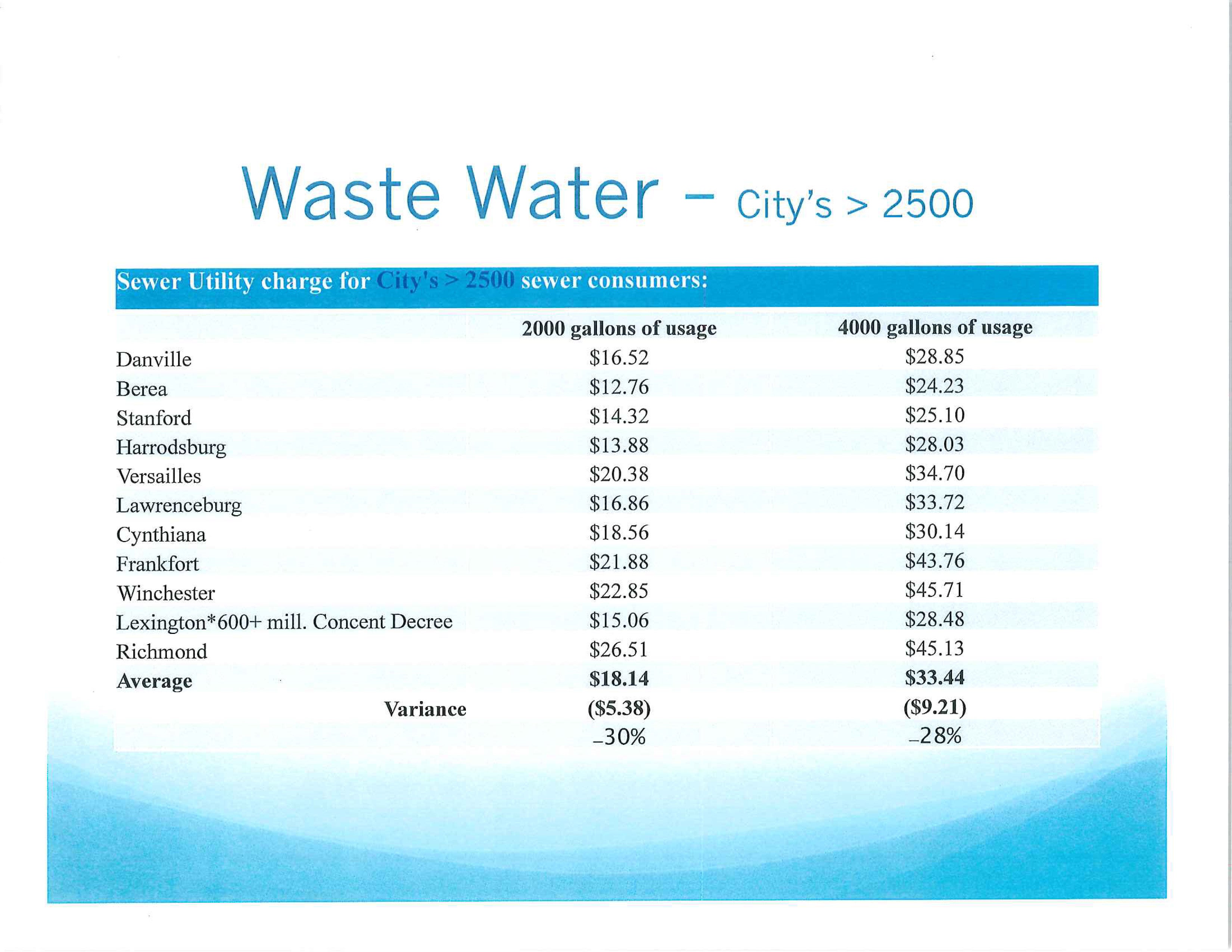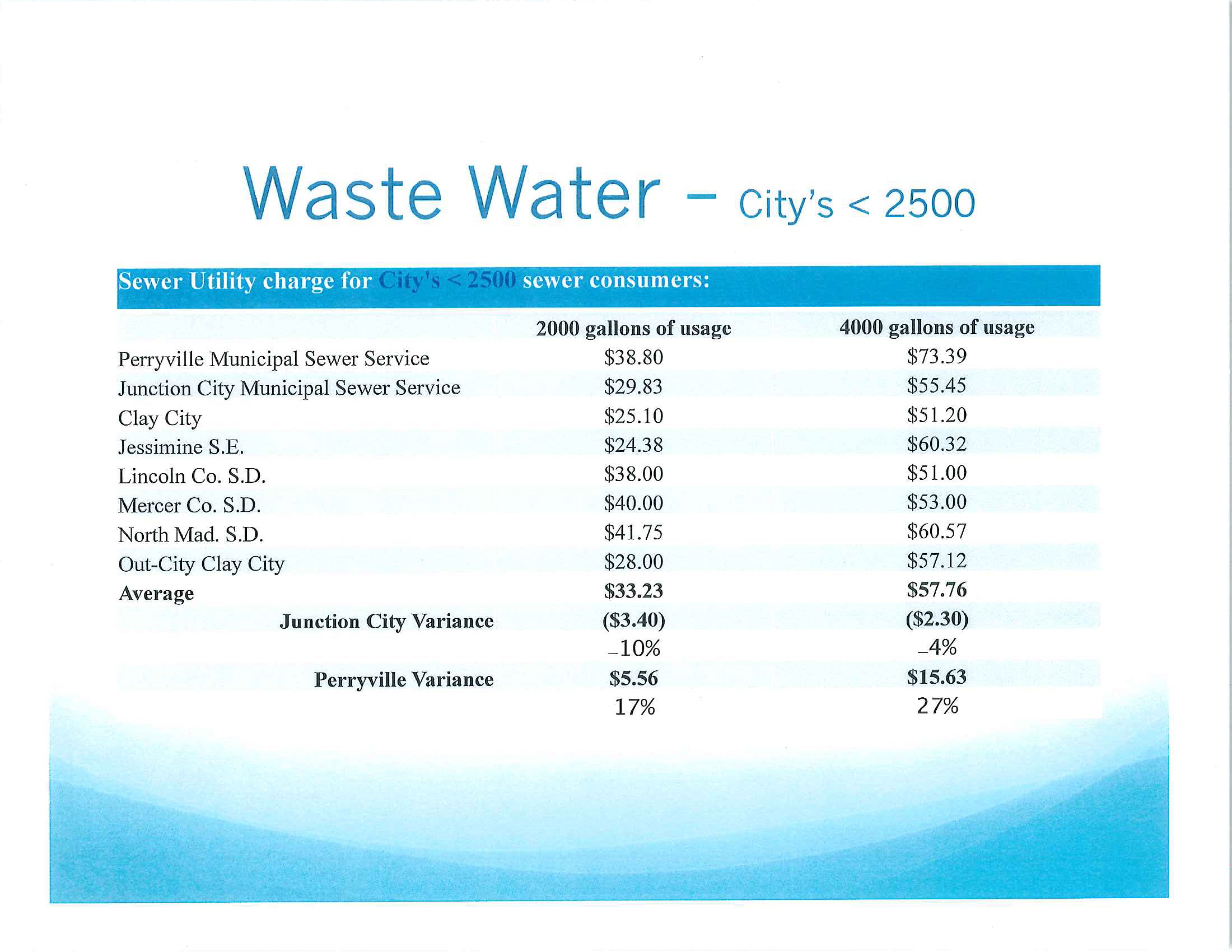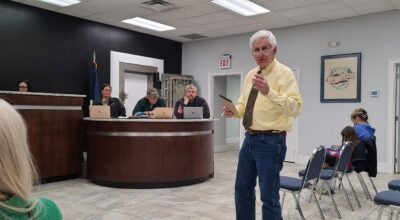Danville engineer plans to explain water, sewer rates
Published 7:01 pm Wednesday, January 16, 2019
Earl Coffey has had his fair share of complaints about the “water rate” increase. As municipal utility engineer for the City of Danville, he says he gets it — it’s a frustrating situation for citizens.
Monday, he told the city commission what he plans to discuss with newly elected leaders, locally and in Perryville and Junction City, as a way to get them caught up on the hot topic. One of the commission’s top goals for the new year was to squash lots of “misinformation” it says has been spreading like wildfire about the increased rates.
“My goal is, as time permits, to meet with individuals who have questions … those who are newly elected, provide them with some missing information,” Coffey said.
Danville acquired Perryville and Junction City’s utilities years ago. Aside from the regular cost of living rate increases, there is a surcharge added on to deliver outside of Danville city limits; and both Junction and Perryville had debts left to pay for their systems, something Danville is legally not allowed to take on.
The city’s rate structure is based on the American Water Works Association’s standards. AWWA, described online as an “international non-profit, scientific and educational association founded to improve water quality and supply,” generates the standard, offering guidance for rate-making, Coffey said.
He’s attended classes through the organization on “the principles of water rates,” and said he will continue to do so in order to stay up-to-date with best practices.
Coffey said he’s talked to many utilities customers about concerns over their bills. “System-wide, generally speaking, the average household uses 4,000 gallons a month,” he said. So if anyone’s way over that, he compares bills; asks how many are living in the home, etc.
“It can be a leak that occurs on their side, a stuck commode. It can be a hose a child left turned on outside and turned off later, but it ran several thousands of gallons through … “ Coffey said he’s even seen cases where neighbors have stolen water by using others’ outside hoses.
“We’ll develop a presentation eventually … and make it to a council meeting — if they want us to come — in Perryville, for example.”
Coffey said he will answer questions about “arbitrary increases” and explain the “penny-for-penny” agreement, where ratepayers in Perryville and Junction would pay precisely the same rate, and how that relates to the Danville fees. He will further explain how utility charges are based entirely on consumption, which homeowners have control of, and how Danville, Junction and Perryville all have debts separate from each other that affect rates, he said.
“And the cost to operate a sanitary sewer system is much different than the water system. These are two separate utilities that have their own operational and debt costs, but they are all on the same municipal bill,” along with various taxes, he said.
Coffey points to the fact that Danville invested $4.5 million in the Ball’s Branch sewer project in order to get Junction out of its 2005 tap-on ban and $2.5 million for the Airport Road sewer expansion.
In Perryville, there are only 407 customers on sanitary sewer, meaning they are paying all the expenses to operate the wastewater plant there; operational costs in 2004 were $96,000 when Danville took them over. Now, it’s at $166,000, Coffey said.
“Buy hey, listen — the unique thing with local government … it’s a service organization. The reason it exists is to provide service,” he said. The city is “touchable and approachable,” with a local office. “So we get the brunt of that frustration. Which is real frustration, and valid frustration, in my opinion. It just is. The cost of everything is going up.”
Coffey said many times, when customers come in to complain about their bill, after it’s explained to them, “It goes beyond water and sewer rates real quick. Folks are stressed because everything costs more now. And I get that.”
Coffey said he will reach out to elected officials to explain the situation in detail and offer to appear at public meetings.
“I don’t have any specific dates right now, and it may be a six-month process, who knows,” he said. “But it’s our goal to make sure we reach out to everybody and give them info that may be missing.”


